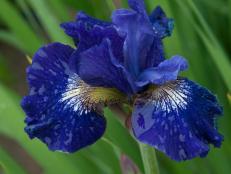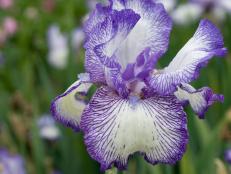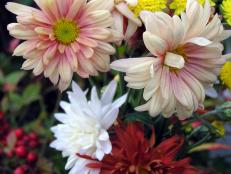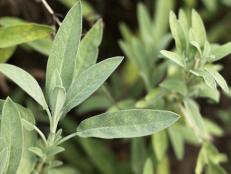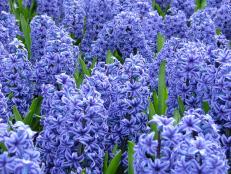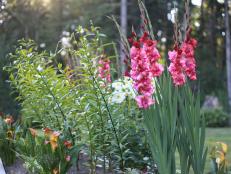Japanese Iris
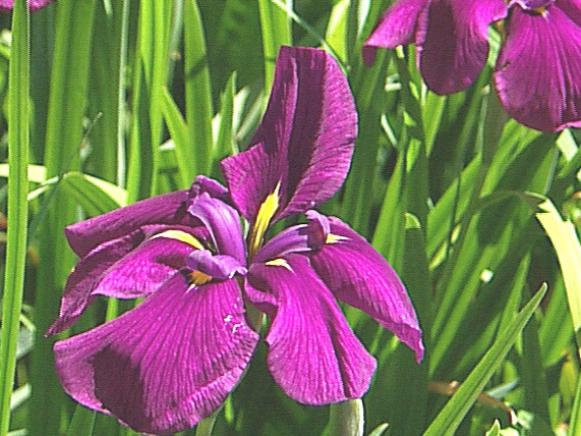
Plant type: Herbaceous perennial
Botanical name: Iris ensata
Hardiness: USDA Zones 4 to 9
Has the largest blooms of all the irises, up to 12 inches across. Valued for its ability to grow in wet conditions. The Japanese iris flower has upright petals, called standards, in addition to hanging petals, called falls. However, the standards are shorter and more flattened, giving the flower a relatively flattened appearance in comparison to other iris flowers, such as the more upright bearded iris. Flowers are white, rose, orange, yellow, purple and blue. Single- (has three falls), double- (has six falls) and peony-style (has nine or more falls) flowering types available. Blooms in summer. Foliage is green and grasslike and dies back after it has finished blooming. Plant size is 24 to 40 inches tall and 36 inches wide.
How to use it: Plant in mass for full effect. Use in the front to back of a mixed perennial border, in a bog garden or near a water feature.
Culture: Prefers a rich, acidic, moist to wet soil. If summers are dry, provide supplemental water to encourage blooming. Plant in full sun to light shade. Benefits by fertilization. Primarily propagated through division. Dig and divide only when plants show less vigorous flowering. Can be divided in spring (ideal) or fall. May have problems with iris borer, slugs or snails.
Special notes: The name iris is derived from Greek mythology where Iris was the goddess of the rainbow, therefore aptly named for its variety of flower colors. Beardless iris. Japanese iris has rhizomes which are thick, fleshy stems that grow underground. Ideal for wet sites.
Selected Cultivars






